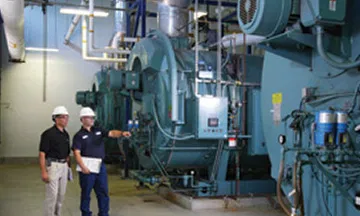Steam boilers are vital components in various industries, providing energy for operations that require consistent heat and pressure. However, their continuous operation makes them susceptible to wear and tear, which can lead to performance inefficiencies or even safety hazards if not properly maintained. Scheduled maintenance programs are the most effective way to ensure that boilers operate safely and efficiently. These programs involve planned inspections, cleaning, testing, and repair tasks performed at regular intervals. Implementing such a system not only safeguards personnel and equipment but also extends the lifespan of the boiler and minimizes costly downtime.
Understanding the Importance of Scheduled Maintenance
A steam boiler functions under high pressure and temperature, making safety a top priority. Scheduled maintenance programs are designed to detect potential problems before they escalate into major failures. Regular upkeep ensures that every part of the system, from the pressure vessel to the safety valves, performs reliably.
Neglecting maintenance can result in:
- Reduced operational efficiency
- Increased fuel consumption
- Equipment damage or leaks
- Safety risks due to pressure buildup or corrosion
Regular inspections help identify these issues early, ensuring consistent performance and compliance with safety regulations. Discover essential safety practices and performance-boosting strategies by exploring https://sosomodapks.com/steam-boiler-maintenance-tips-keeping-your-system-efficient-and-safe/ to keep your boiler in peak condition.
Key Components of a Scheduled Maintenance Program
An effective maintenance program focuses on detailed checks, testing, and cleaning. The main steps include:
- Visual Inspection: Checking for leaks, cracks, corrosion, and unusual noises.
- Water Treatment Monitoring: Ensuring proper water quality to prevent scale buildup and corrosion.
- Safety Valve Testing: Confirming that all safety devices function correctly.
- Pressure and Temperature Checks: Maintaining correct operating conditions for efficiency.
- Burner and Combustion Review: Cleaning and adjusting the burner for proper combustion and reduced emissions.
- Record Keeping: Documenting every inspection, test, and repair for reference and compliance.
These steps, when performed routinely, build a solid foundation for operational safety and reliability.
Benefits of Scheduled Boiler Maintenance
Establishing a maintenance schedule offers multiple advantages beyond safety. Some of the major benefits include:
- Improved Efficiency: Clean heat exchange surfaces and optimized combustion reduce energy consumption.
- Extended Equipment Life: Regular servicing minimizes wear on components, extending the boiler’s operational years.
- Enhanced Safety: Detecting and fixing small issues prevents accidents and system failures.
- Lower Operational Costs: Preventive actions reduce repair expenses and unplanned shutdowns.
- Regulatory Compliance: Meeting inspection and safety standards helps avoid penalties and legal issues.
These outcomes contribute to smoother production cycles and better long-term cost control.
Creating a Reliable Maintenance Schedule
The frequency of maintenance depends on operating conditions and the boiler’s workload. However, a typical program includes:
- Daily checks for pressure, temperature, and water levels
- Weekly tests for safety devices and blowdown procedures
- Monthly inspections of fuel systems and combustion performance
- Annual shutdowns for internal cleaning and major overhauls
Maintaining discipline with these schedules ensures predictable and safe boiler operation.
A structured steam boiler maintenance program is an investment in safety, efficiency, and reliability. Regular inspections and timely servicing reduce risks, optimize performance, and extend equipment life. By prioritizing scheduled maintenance, businesses can maintain high safety standards while achieving consistent productivity and lower operational costs.
